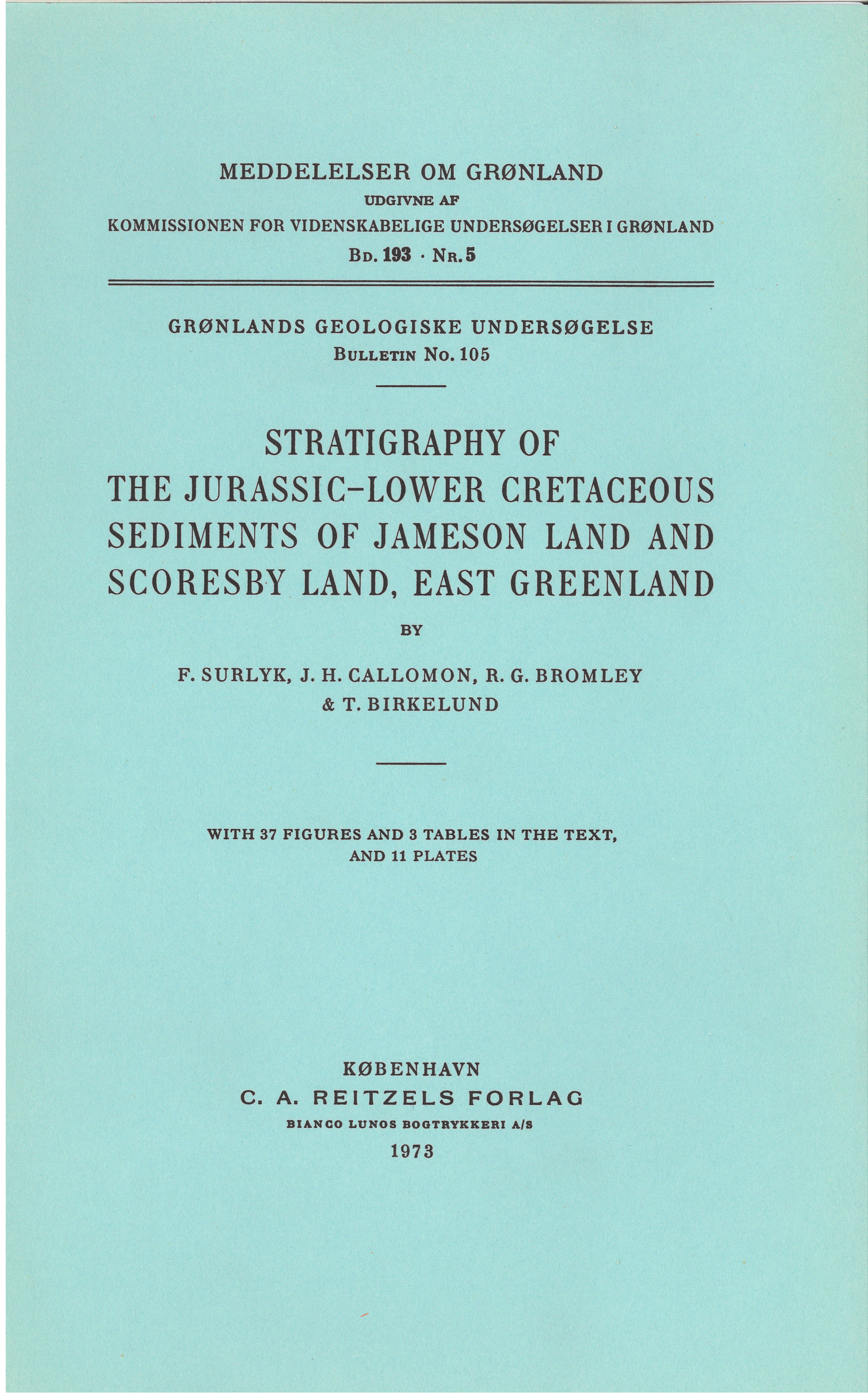Stratigraphy of the Jurassic-Lower Cretaceous Sediments of Jameson Land and Scoresby Land, East Greenland.
DOI:
https://doi.org/10.7146/mog.v193.149647Resumé
The Jurassic-Lower Cretaceous sediments of Jameson Land and Scoresby Land are divided into seven formations. They comprise from bottom to top: Kap Stewart Formation of Rhaetian-Liassic age; Neill Klinter Formation of Pliensbachian-Toarcian age divided into three members; Vardekløft Formation of ?Bajocian-Middle Callovian age redefined and divided into three members; Olympen Formation of Upper Callovian-Middle Oxfordian age designated as a new formation; Hareelv Formation of Upper Oxfordian-Middle Kimmeridgian age designated as a new formation; Raukelv Formation of Upper Kimmeridgian-Upper Volgian (Lower Ryazanian ?) age designated as a new formation and divided into three members; Hesteelv Formation of Ryazanian age designated as a new formation and divided into two members. The six lower formations together comprise the Jameson Land Group. The main facies types are described. They comprise black shales, shaly siltstones, horizontally bedded sandstones, ripple-laminated sandstones, massive-bedded sandstones, medium- and large-scale cross-bedded sandstones, black shales with lenticular sand-bodies and coals. A general interpretation of the changing depositional regimes throughout the Jurassic and Lower Cretaceous of Jameson Land and Scoresby Land is given. The interpretation is based on the spatial distribution of the different facies types, on longitudinal profiles, and on investigations and measurements of cross-bedding, parting-lineation, grain sizes and sand-shale ratios. The exact geographical position or the borderlands and thus or the source areas of the sediments are rarely known but the predominance or very coarse sediments and the large-scale sedimentary structures indicate a position very near the coast.

Downloads
Publiceret
Citation/Eksport
Nummer
Sektion
Licens
Coypyright by the authors and the Commision for Scientific Research in Greenland. No parts of the publications may be reproduced without the consent of the copyright holders.

